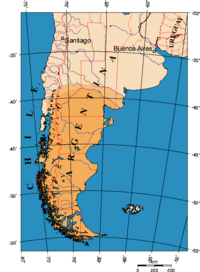
Photo from wikipedia
The hydrocarbon explorations were mostly guided by conventional geological and geophysical techniques in the past and modern tools like Remote Sensing, GIS, geophysical tomography came into being only during the… Click to show full abstract
The hydrocarbon explorations were mostly guided by conventional geological and geophysical techniques in the past and modern tools like Remote Sensing, GIS, geophysical tomography came into being only during the last 2–3 decades. However, advanced virtues available with GIS, which could provide potential clues in deciphering the deep-seated natural resources were not capitalised deservingly. In this connection, the present article is the outcome of a study carried out in parts of Cauvery Basin, India for deciphering the subsurface hydrocarbon locales using Digital Elevation Modelling (DEM) techniques. The study was accomplished by the following hierarchical steps. (i) In the first step, DEM of gravity, litho tops depth of layered sedimentary rocks of Tertiary period and iso-resistivity data of 50 m depth were generated using Arc-GIS. (ii) It was followed by mapping the surface expressed circular features and the faults. (iii) Then, all the above surface and multi-depth data on the geological structures were integrated using Arc-GIS. (iv) From such an integration, 3D visualised domal structures of probable of hydrocarbon parentage were identified. (v) Finally, these were validated using known oil/gas wells. The study revealed the occurrence of domal structures with encircling peripheral faults from the subsurface to surface level in number of places. The spatial correlation of the known oil and gas occurrences with these 3D visualised domal structures indicated that the peripheral faults and domes have acted respectively as the zones of mobilisation and accumulation of oil and gas.
Journal Title: Journal of Earth System Science
Year Published: 2019
Link to full text (if available)
Share on Social Media: Sign Up to like & get
recommendations!